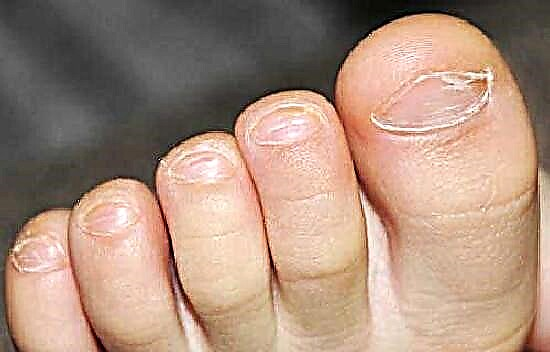
Follicles are part of a woman's gonads, that is, an integral component of them. These are special formations in which immature germ cells are under reliable protection. The task of the follicle is to protect the oocytes, and when the time comes, to ensure the safety of the egg during maturation and release on the day of ovulation.

How does growth happen?
The follicles are given to a woman by birthright. Newborn girls have in their ovaries from 500 thousand to a million primodial follicles, the size of which is negligible. With the onset of puberty, the girl starts a monthly continuous process of folliculogenesis, which will last throughout her reproductive life and will end only with the onset of menopause.
For a lifetime, a woman is assigned about 500 sex cells, it is they who will ripen one at a time in each menstrual cycle, and on the day of ovulation, leave the asylum bubble, which has reached its maximum size. After ovulation, fertilization is possible within 24-36 hours. Only one follicle and one egg is needed for conception.
With the onset of puberty, the girl begins to produce a hormone responsible for follicular growth. It's called FSH, which is follicle stimulating hormone. It is produced by the anterior pituitary gland. Under its influence, the primodial vesicles begin to increase, and already during the next ovulation, some of them first become preantral, and then antral, inside which there is a cavity filled with fluid.

Antral follicles at the very beginning of the female cycle can be from 5 to 25. Their number allows doctors to predict how much a woman is capable of self-conception, whether pregnancy is possible without the stimulation and help of doctors. Nine to 25 bubbles are considered normal. If a woman has less than 5 antral-type follicles, then a diagnosis of infertility is established, in which IVF with donor eggs is indicated.
Antral follicles grow at approximately the same rate, at the same rate, but soon a leader begins to form, growing faster than others - such a bubble is called dominant. The rest slow down growth and reverse development. And the dominant one continues to grow, in it a cavity with a liquid expands, in which an egg cell matures.
By the middle of the cycle, the follicle reaches large sizes (from 20 to 24 mm), during which it usually bursts under the influence of the hormone LH. The egg becomes available for fertilization in the next 24-36 hours.
The former follicle, or rather the remnants of its membranes, are grouped into a new formation - the corpus luteum, which produces progesterone. If conception does not occur, the corpus luteum dies after 10-12 days and the production of progesterone sharply decreases before menstruation. During pregnancy, the corpus luteum continues to function until the end of the first trimester.

In the absence of pregnancy, a new stage of folliculogenesis according to the same scheme proceeds from the first day of the cycle, that is, from the very beginning of the next menstruation. If a woman's body is working normally, there are no problems with hormonal levels, then ovulation occurs monthly. 1-2 anovulatory cycles per year are considered acceptable. With age, the number of cycles without follicle maturation and ovulation increases to 5-6 per year, but this is normal, since the woman's genetic material is aging, and the follicular supply is depleted.
It is impossible to replenish it - nature did not foresee such an opportunity, and therefore it is important to monitor your health and take good care of the ovulatory reserve.
Resizing
It is difficult to say what size the follicle should normally have at one stage or another of its development. The data that exist in the tables are only approximate, they do not take into account the individuality of a particular woman. With each day of the cycle, the size of the bubbles changes, since the process of folliculogenesis is continuous and constant.
At the very beginning of the cycle, the size of the follicles does not exceed 2-4 mm. But as it grows, the diameter of the antral follicles becomes larger, and the number of follicles themselves decreases. By the 8th day from the beginning of the cycle, the dominant follicle is usually released, and then only its size is recorded until ovulation.
Follicle size table by day.
It is not at all necessary that on the 10-11th day of the cycle, in a particular case, the growth of the dominant bubble is 11-18 mm, since everything is quite individual, but the size of the follicle is still used to predict the ovulation period. For example, a woman with a follicle size of 16 mm will be offered to wait for ovulation, since the size of the bubble does not imply that the rupture will happen very soon.
And it is also important to exceed the size standards: if on the 7-9th day of the cycle or at any other period before ovulation the follicle is larger than 25 mm (26-27, 30-34 mm, and so on), then the doctor is more likely to suggest a cystic formation than a normal ovulatory cycle.
Important! These norms are relevant for women who do not receive hormonal treatment. When stimulating ovulation, sizes may vary.

How to check?
It is, of course, impossible to measure follicles on your own. The only way to do this is to visit a doctor and have folliculometry done. This is a type of ultrasound examination (ultrasound), in which the state of a woman's ovaries is observed in dynamics. The first ultrasound is usually done immediately after the end of menstruation, usually on the 7-8th day of the cycle there is every opportunity to assess the number of antral vesicles. Then the ultrasound is done several times with regularity every 2-3 days in order to be able not to miss the day of ovulation.
The ultrasound doctor, based on the average size of the follicle, will tell you when it is better to stimulate ovulation, when it is better to prescribe the procedure for oocyte retrieval by ovarian puncture in the IVF protocol, and will also be able to say with confidence whether there was ovulation in the current cycle at all.
Folliculometry is necessarily carried out to establish the nature and causes of infertility, as well as to decide on the appropriateness of stimulation.

At the very first procedure, a woman may be surprised to hear that quite a few follicles are maturing in her ovaries. For antral - this is completely normal. Situations where there are either too many or too few such bubbles are alarming. If there are 26 or more, the doctor will suspect polycystic ovary syndrome, in which conception is impossible without prior treatment.
If there are less than 5 antral vesicles (single follicle, 2, 3, 4 follicles), this means that the woman is infertile, so the follicles do not grow even with stimulation - IVF and ovarian function stimulation in this case are not performed. IVF with donor oocyte is acceptable.
The optimal amount for conception without problems is 11-25 follicles. It is this amount that indicates a normal follicular supply and fertility level. With an amount of 6-10, they speak of a reduced follicular reserve, a woman can be stimulated.

Causes of folliculogenesis disorders
The processes of folliculogenesis proceed under the guidance of the hormonal background and depend on the concentration and ratio of the hormones FSH, estradiol, luteinizing hormone, progesterone, testosterone, prolactin. Therefore, any deviation in the endocrine accompanying can cause a disruption in the maturation process of follicles, which will lead to the fact that maturation will proceed either too slowly or rapidly. In the first case, late ovulation is possible, in the second - early. Any of them are not very favorable for normal conception.
Folliculogenesis disorders are varied. For example, with persistence, the follicular membrane does not rupture. This phenomenon is usually associated with insufficient levels of the hormone LH. In this case, the ovum overripe, dies, and the follicle continues to be present on the surface of the gonad for several more weeks. This causes the menstrual cycle to malfunction, conception is impossible during this period.
With luteinization of the follicle, the corpus luteum begins to develop earlier than rupture occurs, so ovulation also does not occur. And if the follicle does not mature to the required size, stopping its development suddenly, then they speak of follicle atresia. In all cases, the ovulation process is disrupted - a woman cannot conceive a baby.
The reasons why follicular development is impaired are numerous. There are temporary factors, after the elimination of which the cycle is restored, and a woman can become a mother without the help of doctors.

There are more serious reasons requiring compulsory treatment, the help of reproductive specialists, embryologists and other specialists who are able to give a woman the happiness of motherhood even in seemingly hopeless cases.
Temporary violations can cause:
- excessive physical exertion, professional sports;
- hobby for mono-diets, sharp weight loss or weight gain in a short time period;
- chronic stress, emotional instability, worries;
- work in an enterprise with a high level of occupational hazard (with paints, varnishes, nitrates, during the night shift, in conditions of strong vibration and increased electromagnetic radiation);
- travel and air travel, if they are associated with climate change and time zones;
- abolition of oral contraceptives;
- diseases transferred in the current months with an increase in body temperature.
Often, women do not notice the violation of follicular maturation at all, because we do not always pay due attention to a delay in menstruation or more abundant discharge.
Among the pathological causes of impaired follicular maturation, various diseases and conditions can be noted in which the endocrine background is disturbed:
- pathology of the pituitary gland, hypothalamus;
- dysfunction of the ovaries;
- inflammatory and infectious diseases of the genital tract and pelvic organs;
- ovarian tissue injuries, the consequences of surgical intervention;
- disruption of the thyroid gland, adrenal cortex.
Hormonal disruptions are often preceded by childbirth and abortion, bad habits, prolonged use of antibiotics, antidepressants, anticoagulants.

What to do?
When follicular growth and ovulation are disturbed, hormonal treatment is usually used. Home remedies, traditional medicine (borax uterus, sage and others) cannot solve the problem that exists at the metabolic level, increase the supply of follicles or build up the endometrium, help follicles grow.
FSH preparations help to accelerate their growth and achieve a mature follicle and full ovulation. They are prescribed by a doctor in strict individual dosage ("Klostilbegit", "Clomiphene" and others). The rate at which follicles grow per day is controlled by folliculometry. When growth reaches the desired parameters, an injection of hCG 10,000 is injected, after which ovulation begins after 24-36 hours.
Drugs that stimulate the growth of follicles, cannot be assigned to oneself and taken uncontrollably. This can lead to very sad consequences.
If growth does not occur even with the recommended hormonal treatment, IVF with donor oocytes is recommended, as there is no other way to obtain mature eggs, how to stimulate ovarian hyperactivity.




